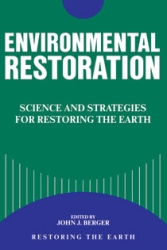
John Berger
John J. Berger is an American climate specialist and consultant who has written and edited eleven books on energy and environmental issues. Dr. Berger has consulted to the National Research Council of the National Academy of Sciences, Fortune 500 corporations, nonprofit groups, and governmental organizations, including the U.S. Congress. He was co-founder and director of the Nuclear Information and Resource Service, Inc. of Washington, D.C. and helped launch the environmental restoration movement in 1985 with his book Restoring the Earth: How Americans Are Working to Renew Our Damaged Environment. He also founded and directed the nonprofit Restoring the Earth, Inc., which worked to advance the cause of environmental restoration via public education and environmental policy development. Dr. Berger is a long-time supporter of alternative energy solutions to global environmental problems. For many years he has repeatedly called attention to the nation's excessive dependence on foreign oil and the attendant economic and environmental costs, and risks. He has outlined strategies for a clean, renewable energy economy in books such as Charging Ahead: The Business of Renewable Energyand What It Means for America, Beating the Heat: How and Why We Must Combat Global Warming, and Climate Change Policy (Schneider et al., eds.). His office is located in Berkeley, California where he writes on climate, energy, and natural resources and provides scientific and technical writing as well as editorial consulting services to businesses and individuals.

